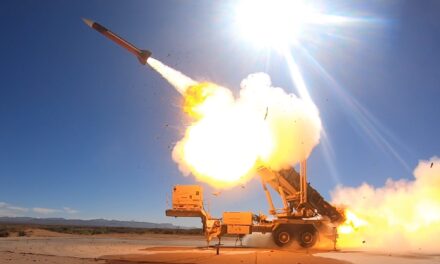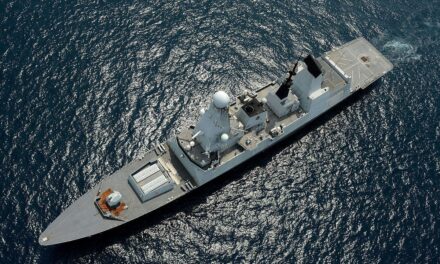We support our Publishers and Content Creators. You can view this story on their website by CLICKING HERE.
Israel and Iran currently have some of the most powerful militaries in the Middle East. Open adversaries, both nations have been intertwined in a shadow war that is escalating into near-open war tensions.
Against the backdrop of the Israel-Hamas War, the Islamic Republic of Iran became more involved in coordinating and supporting its Middle East proxies. Israel, which monitors Iranian coordination with various militant groups in Lebanon, Gaza, the West Bank, and in the region, made a unilateral decision to strike Iran’s top commanders—nearly putting the two powers close to direct war.
Iran vs. Israel: Tit for Tat Direct Engagements in 2024
During the ongoing Israel-Hamas War, a variety of Islamist militant groups intervened on behalf of Gaza. These groups include Hezbollah in Lebanon, Iraqi militias, and Ansar Allah (the Houthis of Yemen).
Seeing a chance at a decapitation strike on the leadership of the Iranian Revolutionary Guard Corps, Israel enacted a brazen attack on a compound next to Iran’s embassy on April 1st. The attack liquidated three top IRGC generals and four other commanders.
Wanting to retaliate due to the effects of the decapitation strike on IRGC commanders, the Mullahs ordered a large-scale suicide drone and ballistic missile strike on Israel on the night of April 13th.
Launching hundreds of Shahed-136 drones and various medium-range ballistic missiles, the IRGC attempted to maintain a perception of direct deterrence and fear against Israel. However, the attack had a domino effect, and the mullahs never assumed it would happen.
Israel not only intercepted approximately 99% of missiles, but the few that passed through only maimed one civilian and damaged only one aircraft. The Israelis were able to counterstrike only a few days later, taking out a highly important radar of an S-300 near the city of Isfahan.
What made the direct Israeli counterattack on Iran decisive was that the S300 complex is located near the nuclear power plant of Isfahan. The IDF reportedly only used a few missiles to hit its target, which Iranian air defense couldn’t intercept.
Why Israel Currently Holds a Leverage
Directly attacking a radar battery opens up Iran to future Israeli airstrikes if escalation were to happen again, and attacking near the power plant reestablished air superiority over the Islamic Republic and showed that Israel can hit valuable targets without resorting to a mass drone or missile swarm.
Israel’s vaunted air defense intercepted numerous targets, such as the Iron Dome and Arrow 2 and 3. The US, Britain, France, and even Arab states such as Jordan and Saudi Arabia also intercepted numerous targets, with the UAE providing critical intelligence.
The Islamic Republic, which hoped to break all current Middle East normalizations and that Israel would be more internationally isolated than ever during the Gaza War, miscalculated greatly.
Iran, however, under a current theocratic regime, does not have the military or diplomatic backing of regional and global superpowers. China, despite a large-scale trade deal, is reluctant to back the Islamic Republic militarily, and Russia is even more heavily sanctioned with a military that is overstretched and has suffered hundreds of thousands of casualties in the past two years due to its war in Ukraine.
The younger generation of Iran is more irreligious as archaic Sharia laws have dissuaded them from supporting the mullahs and their current country. In contrast, despite having a corrupting Netanyahu government, most Israelis still hold a strong sense of nationalism and pride.
Whereas the Islamic Republic of Iran Army represents the Iranian people, the personal army of the Mullahs, the IRGC, represents exporting theocratic Islam across the region—the same hardline laws that are oppressing the people of Iran—making it less likely Iranians would fight for Khamenei.
Lessons For the Future
A war between Israel and Iran would be catastrophic for the region and even the global economy. The mullahs have threatened retaliation for countries who openly help Israel and have the capability to strike their oil fields.
Whereas the Israelis have a layered and strong air defense, America’s Gulf state allies still rely on US support, giving the IR leverage over Arab states to provide logistical support for Israel.
The immaculate interception rate by Israel and allied nations and the subsequent autonomous limited strike on an important radar installation near Isfahan’s nuclear facility is a moral and psychological scar on the mullahs, who launched a large combined drone and missile attack that proved ineffective.
In the future, the Islamic Republic will continue to resort to using their Arab proxies as cannon fodder as, for now, Iran does not have a valuable deterrence to dissuade Israel from attacking their territory directly. While Israel has a direct edge over Iran, the proxies, particularly Hezbollah, pose just as much, if not even greater, existential threat.
Hezbollah, which fields an army between 50 and 100,000, is stronger than the Lebanese army and could have upwards of 150,000 short, medium, and long-range rockets.
Compared to Iranian missiles and drones originating from Iran, Hezbollah’s missiles can come suddenly, which would hamper response time from Israeli and allied air defense. However, a new war between Israel and Hezbollah would be a nightmare that both parties would try to avoid under any means necessary.
Today, if a direct war takes place, Israel would hold not only a missile defense and aerial superiority advantage over Iran but a diplomatic advantage as Israeli allies have shown they would intervene on their behalf. However, knowing the advantages Israel holds over their country, especially as the regime becomes unpopular, the mullahs of Iran will continue using their proxies to disrupt peace processes in the region until the Islamic Republic finds a potential nuclear deterrence/blackmail.
About the Author: Julian McBride
Julian McBride is a forensic anthropologist, SOFREP contributor, and independent journalist born in New York. He reports and documents the plight of people around the world who are affected by conflicts, rogue geopolitics, and war, and also tells the stories of war victims whose voices are never heard. Julian is the founder and director of the Reflections of War Initiative (ROW), an anthropological NGO which aims to tell the stories of the victims of war through art therapy. As a former Marine, he uses this technique not only to help heal PTSD but also to share people’s stories through art, which conveys “the message of the brutality of war better than most news organizations.”

 Conservative
Conservative  Search
Search Trending
Trending Current News
Current News 





